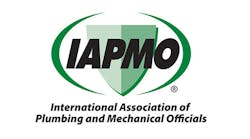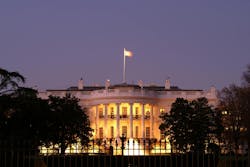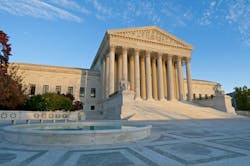Latest from Codes
Sponsored
As we near the end of 2024, we can look back on a year that has seen a great deal of activity when it comes to codes and regulations at all levels of government. In this article, we will only be able to scratch the surface of what is a huge, complex and dynamic issue.
For those contractors looking for better, more detailed answers that will be more specific to the type of work they perform and the area of the country they work in, we suggest strongly that they reach out to their local chapter of either the Plumbing Heating Cooling Contractors (PHCC) or the Mechanical Contracting Association of America (MCAA). As well as being key sources of information, these organizations can amplify the voices of contractors in discussions with legislators and policy makers.
For those with an interest and relevant expertise, the International Association of Plumbing and Mechanical Officials (IAPMO) welcomes both members and non-members to participate in its code-development process.
For plumbers doing residential service and repair at the small- to mid-sized business scale, the local plumbing code that they work to every day may not see much change. Even so, they can expect to see more low-flow fixtures, high-efficiency toilets, “smart” controls and heat-pump water heaters in their day-to-day work. This might mean extra training for technicians, and possibly an investment in new tools and software.
The larger the business and the more commercial plumbing, multifamily plumbing and infrastructure-related projects they take on, the more codes and regulations will affect their bottom line.
In this feature we will group the most recent, most impactful codes and regulations according to three major policy goals:
· Protecting the health and safety of the public
· Directing how federal infrastructure money will be spent
· Decreasing carbon emissions
There is a great deal of crossover between the three. Some regulations are the direct result of laws passed by congress, others derive from rules established by regulatory bodies (such as the EPA or DOE); some are the effect of executive orders, some are from the voluntary adoption of codes (such as the Uniform Mechanical Code or the Uniform Plumbing Code), and some come from local rules and regulations.
Health and Safety
PFAS
Much like the Lead and Copper Rule from nearly a generation ago (1991), protecting the public from harmful contaminants—in this case PFAS—is the reasoning behind the new National Drinking Water Standard.
Back in April of 2024 the Biden Administration issued the national (and legally enforceable) drinking water standard to protect communities from exposure to harmful per-and polyfluoroalkyl substances (PFAS), also known as "forever chemicals."
Exposure to PFAS has been linked to deadly cancers, impacts to the liver and heart, and immune and developmental damage to infants and children. This final rule represents the most significant step to protect public health under EPA’s PFAS Strategic Roadmap.
The EPA announced nearly $1 billion in newly available funding through the Bipartisan Infrastructure Law to help states and territories implement PFAS testing and treatment at public water systems and to help owners of private wells address PFAS contamination.
This is part of a $9 billion investment through the Bipartisan Infrastructure Law to help communities with drinking water impacted by PFAS and other emerging contaminants—the largest-ever investment in tackling PFAS pollution.
Lead and Pathogens
However, just because the potential harm of PFAS are being addressed does not mean that concerns about lead contamination have disappeared. The 2021 Infrastructure Investment and Jobs Act appropriated approximately $15 billion to governmental entities—as administered by the EPA—for the identification and replacement of lead service lines (almost half of which will be provided to disadvantaged communities as grants or principal forgiveness). A lot of that money has finally worked its way to the municipal level.
For system designers and those in facilities maintenance, the fight against harmful contaminants is conducted alongside the fight against waterborne pathogens. This year, a key development in that fight has been the creation of ASSE/IAPMO/ANSI 12080, Professional Qualifications Standard for Legionella Water Safety and Management Personnel.
ASSE/IAPMO/ANSI 12080 outlines the minimum qualifications needed to become a member of a water safety team involved in the development of a risk assessment analysis, and water management and sampling plan, for protection from Legionella and other waterborne pathogens. Its purpose is to provide a curriculum of minimum criteria, identified by industry consensus, to ensure knowledge and understanding of standards and codes, and the resources, understanding, and skills needed to conduct a facility risk assessment and implement a water safety and management program.
(At the time of this writing, IAPMO is conducting the association’s Assembly Consideration Session, as part of the development of the 2027 Uniform Code at its annual conference.)
Infrastructure
Efforts to safeguard America’s drinking water are tied closely to improvements in our nation’s water infrastructure. In February, the EPA announced over $5.8 billion in funds for states, tribes, and territories to invest in clean water infrastructure upgrades.
The funding is part of the over $50 billion investment in water infrastructure upgrades from the Bipartisan Infrastructure Law. Almost half of this funding will be available as grants or principal forgiveness loans, ensuring funds reach underserved communities most in need of investments in water infrastructure.
The $5.8 billion investment will be made through the Clean Water and Drinking Water State Revolving Funds (SRF), one of EPA’s signature water investment programs, with $2.6 billion going to the Clean Water SRF for wastewater and stormwater infrastructure and $3.2 billion going to the Drinking Water SRF for drinking water infrastructure.
Of key concern is how that money will be distributed. Back in 2022, the Biden Administration issued an Executive Order requiring Project Labor Agreements (PLAs) for large (exceeding $35 million in anticipated costs), federally funded infrastructure projects. PLAs are collective bargaining agreements that require job owners/employers to hire through union halls (although those workers do not necessarily have to belong to a union).
Just in September, President Biden signed the “Good Jobs” executive order that outlines a clear list of labor standards that all Federal agencies should prioritize. The order again promotes Project Labor Agreements (PLAs), as well as Community Benefits Agreements (contracts between community groups and real estate developers that require specific amenities or mitigations), voluntary union recognition, and neutrality with respect to union organizing.
Merit shops and merit shop associations have objected strongly to the requirement of PLAs, and several lawsuits are working their way through the courts.
Efficiency & Carbon Emissions
At the end of August, the Department of Energy announced nineteen State and local governments would receive over $240 million to adopt and implement the latest energy efficient building codes.
Funded by the Inflation Reduction Act (IRA) and administered through DOE’s Office of State and Community Energy Programs, these grants are part of a suite of support, including “formula funding” to states and territories from the IRA and additional grants from the President’s Bipartisan Infrastructure Law, that DOE is providing to states, localities, territories, tribes, and their partners to advance both traditional and innovative building energy codes resulting in more resilient, energy-efficient buildings across the country.
For plumbing professionals, building efficiency standards all circle back to efficient water heating. In May of 2024, the DOE finalized Congressionally-mandated energy-efficiency standards for a range of residential water heaters. The new standards are projected to save American households approximately $7.6 billion per year on their energy and water bills, while significantly cutting energy waste and carbon emissions.
Compliance will be required starting in 2029 for the new standards, which would result in over 50% of the newly manufactured electric storage water heaters to utilize heat pump technology, compared to 3% today.
Even more interesting are some initiatives being done at the local level. For example, in June of this year, the South Coast Air Quality Management District (which is in charge of the Greater Los Angeles area) approved updates to a rule (Rule 1146.2) that will require new and existing buildings to transition to zero-emission residential and commercial building water heaters.
For the first time ever, natural gas-fired pool heaters, larger water heaters, small commercial water heaters, boilers, and process heaters must meet a zero-emission nitrogen oxides (NOx) standard when replaced. For new buildings, the rule aligns with building standards that currently require zero-emission units.
The Post-Chevron World
In June, the Supreme Court issued a 6-3 decision overruling its landmark 1984 decision in Chevron v. Natural Resources Defense Council, which deferred to a federal agency’s reasonable interpretation of a statute. The decision in Loper Bright Enterprises v. Raimondo rolls back the power of agencies to interpret more ambiguous laws and instead gives courts leeway to exercise judgment.
The long-term implications of overturning the so-called Chevron-doctrine may have a significant impact on current and future regulations, many of which effect the water industry.
Going forward, Congress may now need to be more precise in its language or be forced to make changes to laws. Federal agencies are likely to be more careful about how to comment on regulations and evaluate whether they have authority for particular rulemaking, resulting in longer timelines.
As the full effects of the ruling become clear, CONTRACTOR will work to keep our readers informed.
Steve Spaulding | Editor-inChief - CONTRACTOR
Steve Spaulding is Editor-in-Chief for CONTRACTOR Magazine. He has been with the magazine since 1996, and has contributed to Radiant Living, NATE Magazine, and other Endeavor Media properties.




